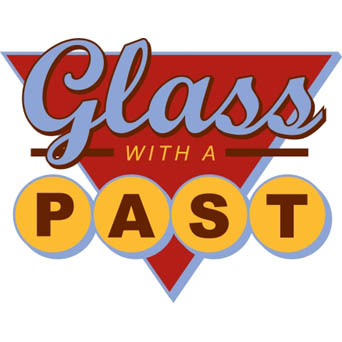Q & A Mondays are answers to reader questions submitted via email or social media. All personal information has been removed for privacy reasons and messages have been edited for clarity. You may submit your own questions through the About/Contact page.
Q: Hello Jodi,
I have a large piece (large for me) and do not have a mold on which I can slump the item. I am hoping that I can kiln wash a dinner plate and slump the piece on that. Do I have to drill holes in the slump mold? Does it have to be a specific type of dinnerware? i.e., Stoneware vs Porcelain?
Thanks,
A: Yes, you can use a plate to slump with. It’s always better to drill holes than have to refire when you get bubbles. So, there are pros and cons to both porcelain and stoneware, although they both will work.
Stoneware: softer, easier to drill, but the glaze may start to craze or crack after a few firings
Porcelain: harder and very sturdy, brittle and difficult to drill
I use both because I usually buy by the shape rather than the material. I just slumped a mixed batch last night, and painted them all with thick kiln wash with a few drops of Liquitex Flow Aid mixed in, it worked like a charm right over the glaze. I also did some stainless steel molds with the same mix, perfect.
Q: I am hoping you can help me with a firing schedule for Vintage Jadite frit for jewelry?
I have tried full fuse schedule with high temp 1465 and hold at 20 but it just melts a bit but still
very bumpy. I also have done the same schedule with high temp 1500 and hold 20 and still same result.
Should I raise temp and hold time? Or just temp ? Or just hold time?
A: I have had very limited success with the opaque glasses. I’m not sure if it is the opaline nature or what, but I just can not get them to melt smoothly! My current favorite workaround is to cut the pieces into jewelry shapes, grind the edges and fire polish them. I’ll keep working on trying to crack the firing question, but as of now, I have no good answers on that front.
Q: I love your website!!! I am an early retired art teacher that is soon to be a full time artist!!!! I have just started working with old glass bottles I find on daily walks. I have never worked with glass before now,but I am learning everyday. Right now I am making necklaces. I can’t find any red because it is rare. Can you suggest any ideas you have on real red glass bottles or just red glass.? All I find is sprayed or painted red.
A: Welcome to the very addictive world of fusing! 🙂
Red is a color not typically found on bottles. It’s made with gold or palladium, so is typically too expensive for a single use item. You can find red glass in wine glasses or plates/dishes, although you do need to watch out for painted pieces there as well.
The wine glasses and dishes that are red are often made with a glass that strikes a different color when fused, so don’t be surprised if your glass turns opaque orange or even brown.
I check in at the thrift store every few days and have managed to find quite a few red pieces, it just takes some time and checking back frequently. You may also want to check yard sales as spring creeps in on us. Estate sales are also good.


